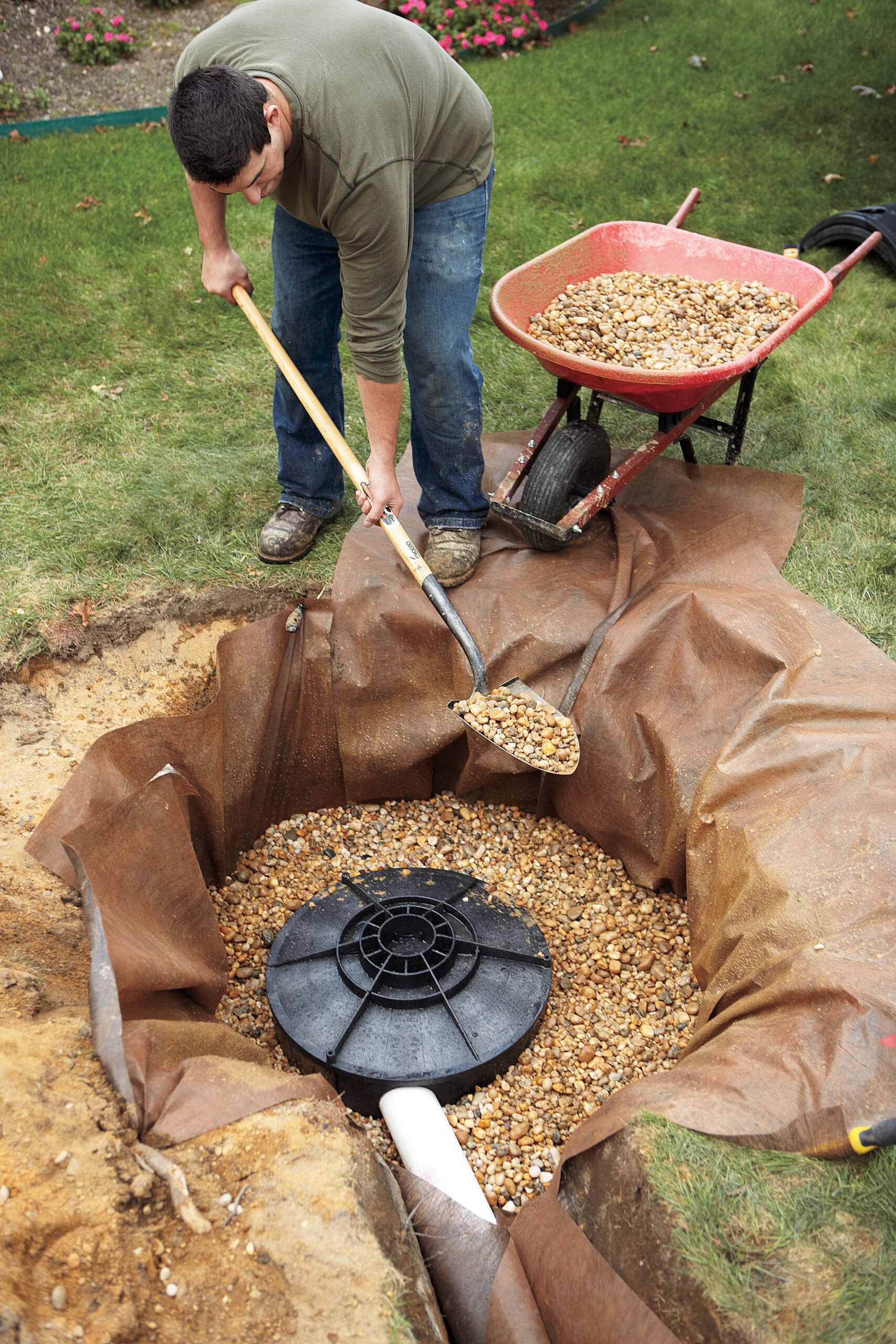Q: We have a downspout that dumps rainwater onto our front walkway, which in winter turns into a sheet of ice. Is there a way to fix this problem? —Tabby McCarthy, Olathe, Kansas
Roger Cook: A wet walkway is not only a slipping hazard, it contributes to damaging frost heaves that can break apart pavement. If you can’t relocate the downspout, route the water under your walk and out to a dry well buried in your lawn.
What Is a Dry Well?
Dry wells are perforated, open-bottom plastic barrels that sit in a hole surrounded by stones. They’re designed to capture water from your roof and slowly disperse it into the ground. This helps keep walkways dry, prevents frost heaves that can damage pavement, and reduces the burden on municipal storm drains.
To determine how many dry wells you should use, you’ll need to do some math and consider both your roof area and soil type. For example, clay soils may need more wells since they don’t drain as efficiently. The calculator on the NDS, Inc. website can help you plan.
6 Steps To Install a Dry Well
Installing a dry well requires careful planning to prevent disturbing foundations and underground utilities. When you’re ready to start digging, follow these steps.
Step 1: Dig the Hole and Trench
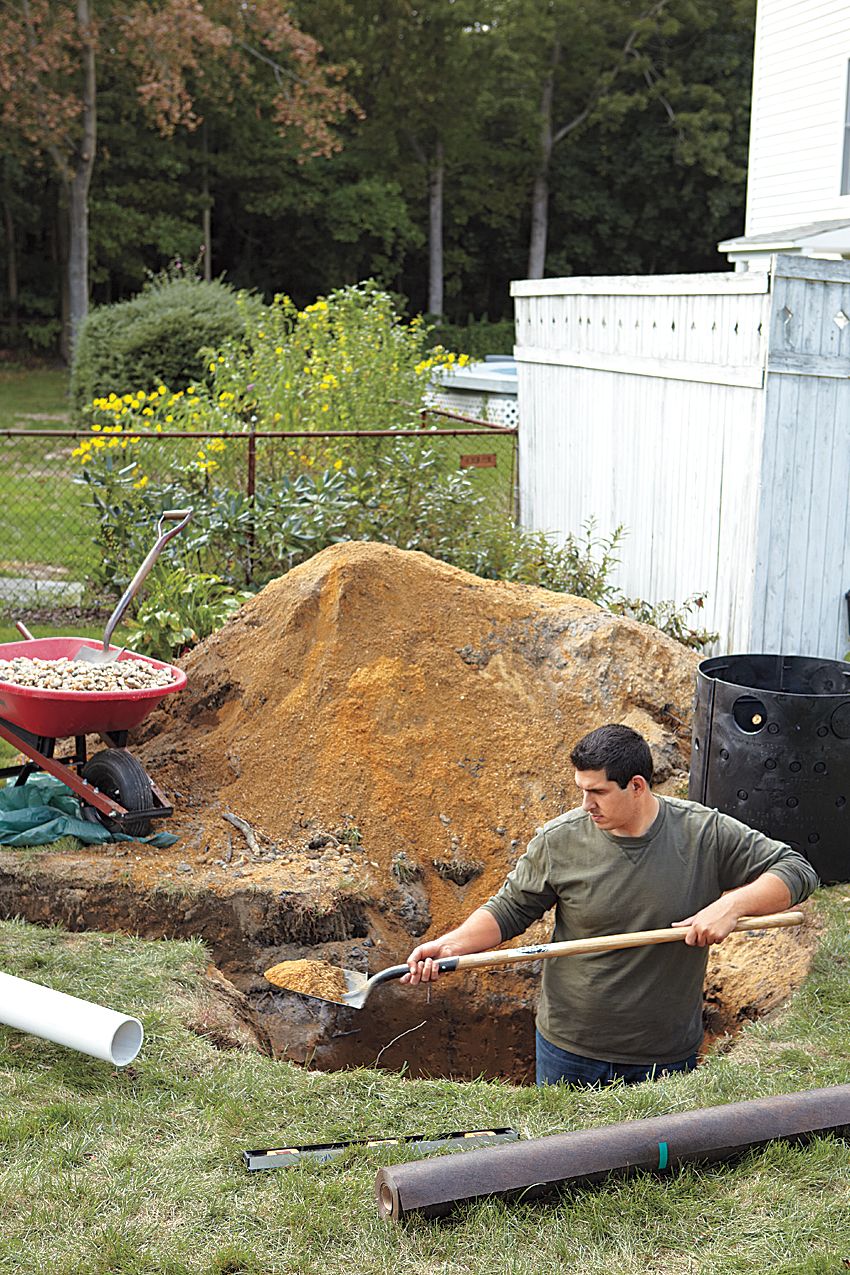
Choose a location for the well that’s at least 10 feet from your home’s foundation and 3 feet from any property line. Before you start to dig, review local regulations regarding excavation depth. You’re also required to call 811 in advance of your dig so public utilities can mark where their underground infrastructure is located. If utilities are right underneath or too close to your site, you must choose another location for safety.
Once everything’s been marked and you’ve determined the site is still safe, dig a hole about 4 feet wide and 4 feet deep. Tunnel under the sidewalk with a long-handled shovel, then dig a trench one foot deep and 6 inches wide that slopes gradually toward the hole.
Shovel the soil onto a tarp to use later. If there’s sod over the area, carefully remove and set it aside to cover the hole once you’re done.
Some people find this step particularly laborious—if you’re one of them, consider renting a small excavator. Even if you’re in enough shape to do the digging yourself, machinery can speed up this initial phase, so long as you use it safely.
Step 2: Line the Hole
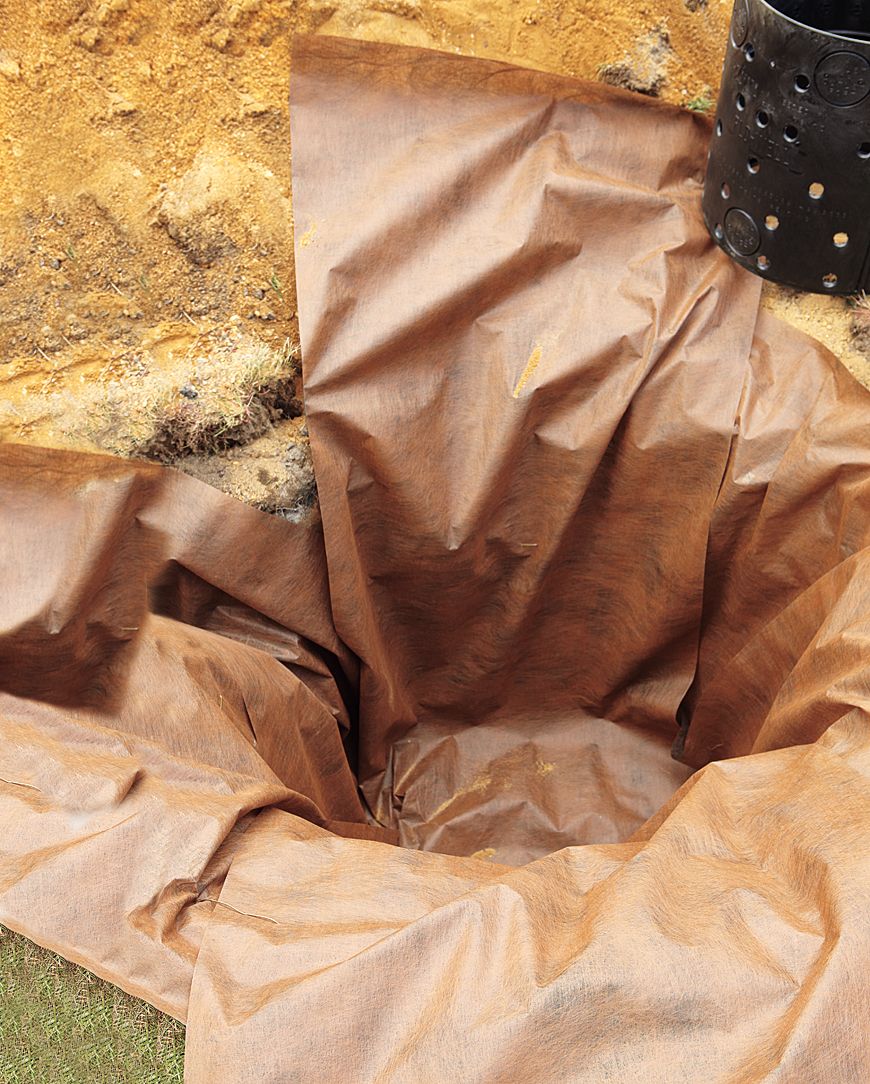
Once you’ve dug out the hole, line it with landscape fabric cut from a 6-foot-long roll. This fabric acts as a barrier so soil can’t clog the stones around the dry well. The longer and higher-quality it is, the better.
Leave enough fabric outside the hole so you can cover the stones completely later. Once the fabric is taut around the edges, secure it with landscape staples so it won’t shift as you fill the stone.
Step 3: Set Up the Pipe
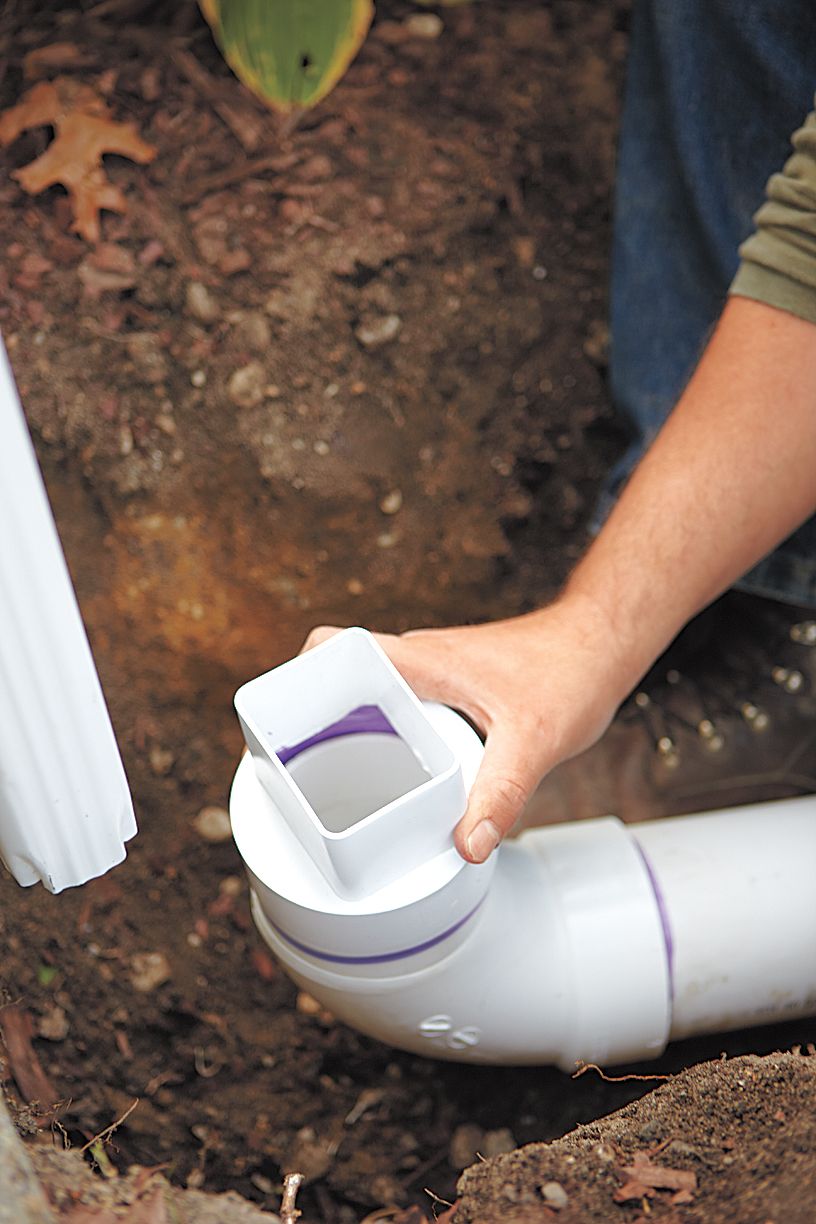
Purchase enough 4-inch-diameter PVC pipe to reach from the end of your downspout to a point 14 to 16 inches into the hole. You’ll also need an elbow and a downspout adaptor.
Remove the existing elbow from the bottom of your downspout. Dry-fit the new pieces and lay the pipe in the trench to see if the configuration works. If it does, use PVC cement to glue everything together securely.
PVC cement gives off strong fumes that can cause aches, dizziness, breathing difficulties, and digestive system problems. To protect your health, wear a vapor-resistant respirator during this step and take breaks for fresh air.
Step 4: Check the Pitch
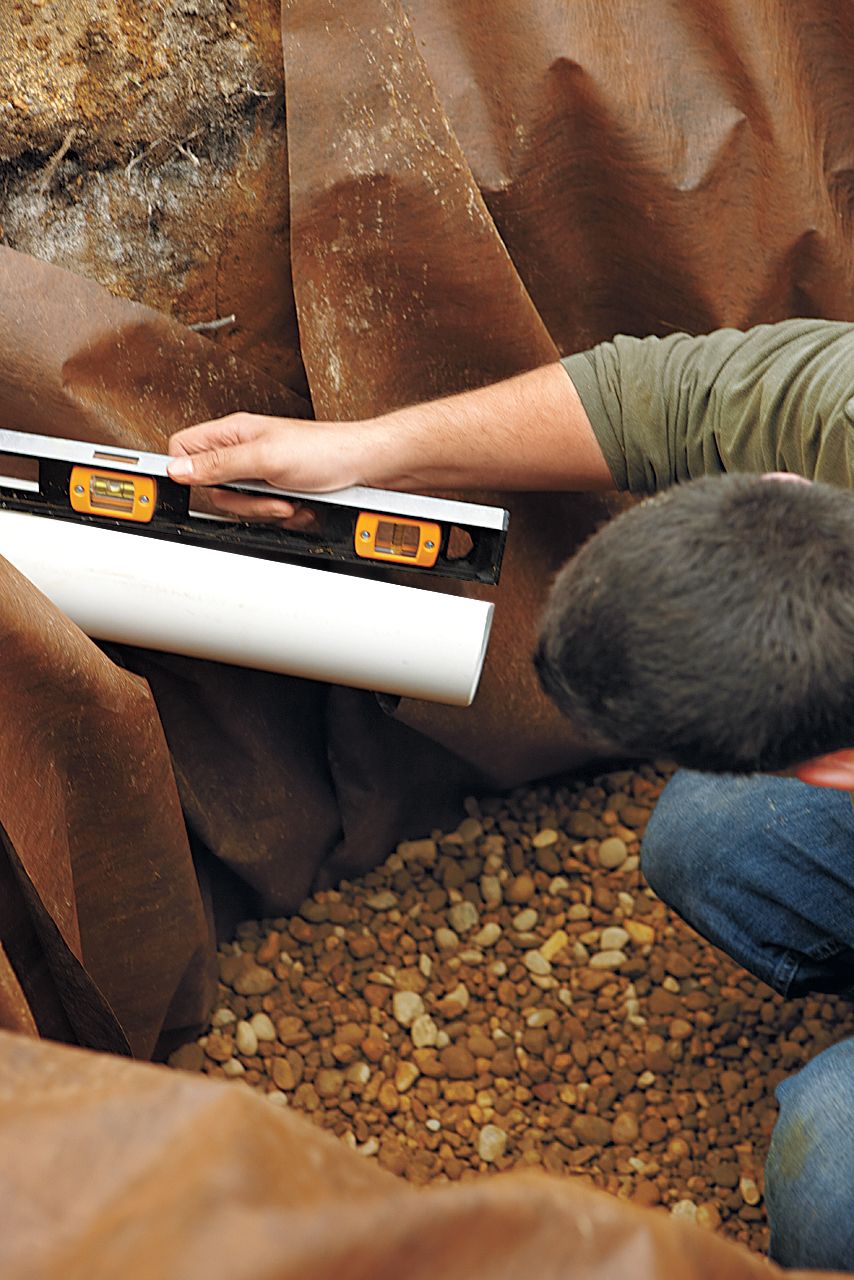
Proper pitch will help water flow to the dry well efficiently. You don’t want it to pool in the pipe or back up into your downspout. Ideally, the pipe should slope toward the dry well at a rate of 1/4 inch per foot of run. A 2-foot level will show a 1/2-inch gap under one end when held level.
Adjust the pitch by adding or removing soil under the pipe. When the pitch is set, attach the adaptor to the downspout with stainless steel sheet metal screws, then backfill soil around the pipe. If the opposite end is too long, trim it down to size.
Step 5: Install the Dry Well
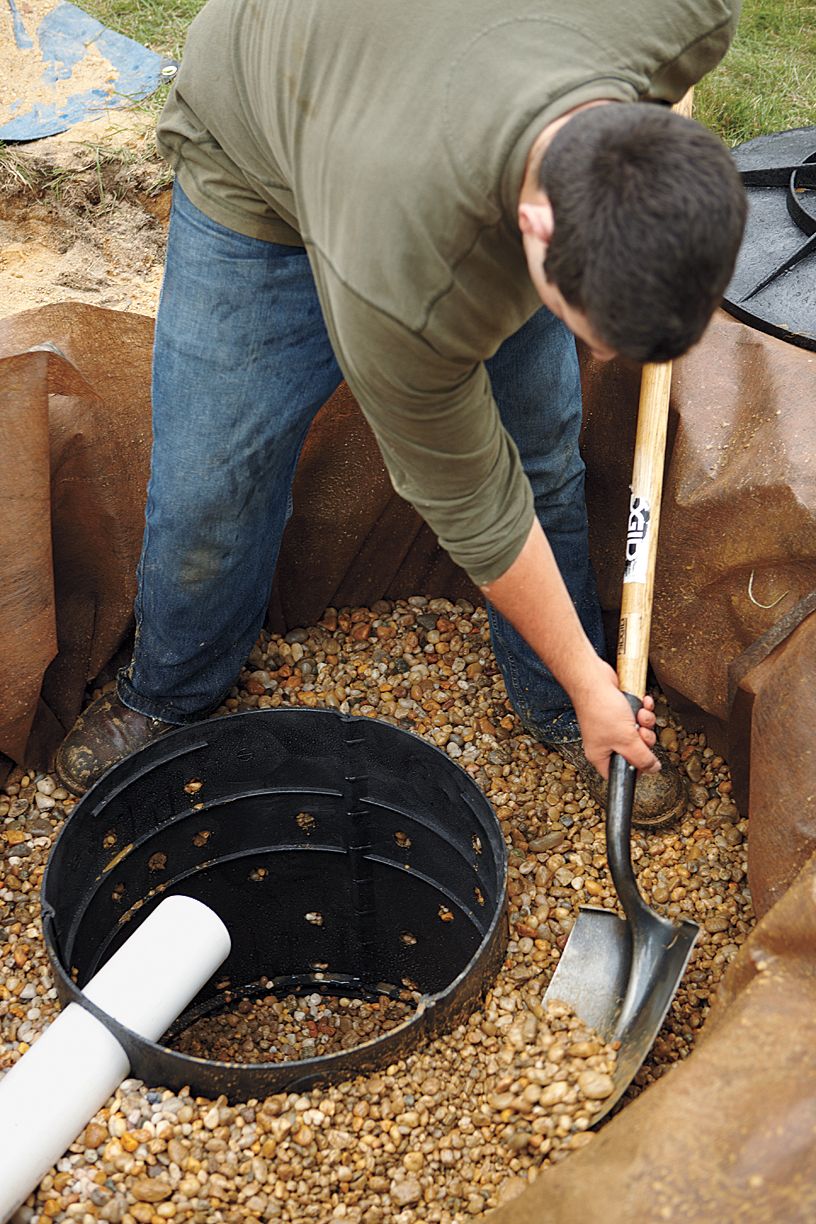
Follow the manufacturer’s directions to assemble the dry well. Knock out all of the 1 1/2-inch diameter drainage holes and one of the 4 1/2-inch ports with a hammer. Then, shovel a 6-inch-deep layer of washed 3/4-inch rounded stone into the hole. Set the dry well in the hole and slide the port over the PVC pipe. Center the dry well and keep filling around it with stone until you reach its top edge.
You’ll want to evenly distribute the stones. As you fill around the dry well, take a few breaks to tap them down so they’re packed tightly. This also protects the well’s efficiency in the long term by keeping water dispersing evenly.
Step 6: Fit the Overflow Emitter
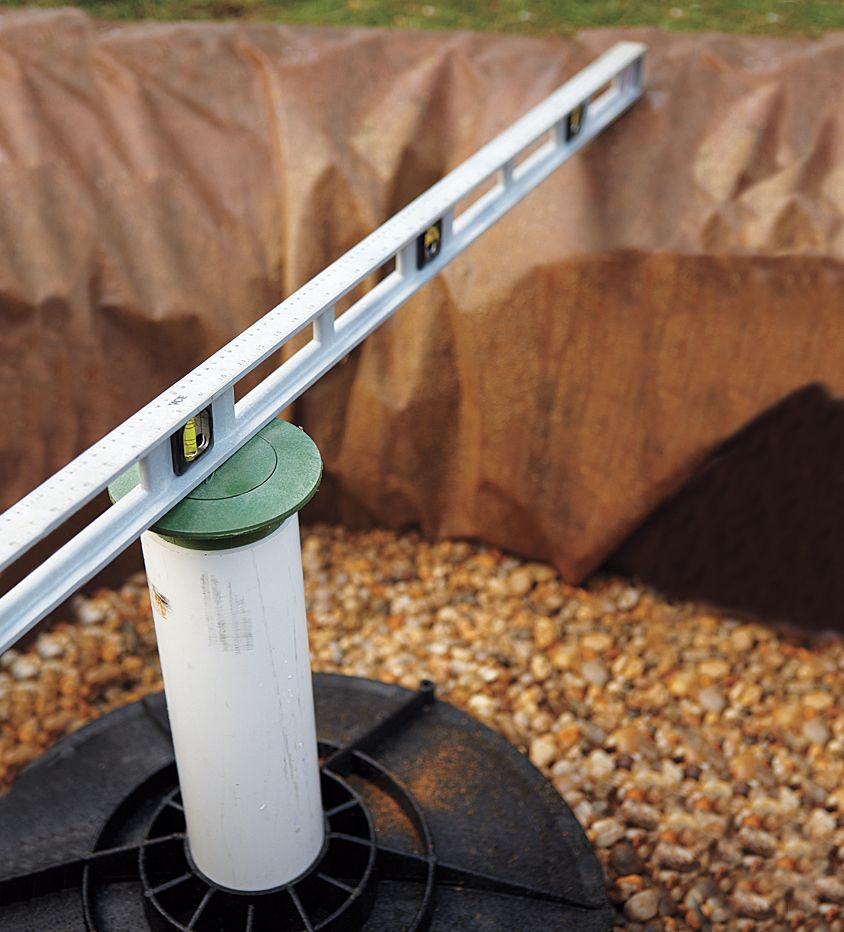
An overflow emitter can prevent potential yard flooding from your dry well. In extreme weather conditions, excess water exits the system through the emitter so it can’t cause further damage to the system, your yard, or your foundation.
Use a reciprocating saw to cut a 4-inch hole in the dry well’s lid. Then, attach the lid to the barrel. Take a length of 4-inch pipe and glue on the emitter. Trim the pipe so that the top of the emitter will sit at ground level once the pipe is glued to the lid. Cover the dry well with landscape fabric, then add soil and replace the sod to complete the installation.
Maintenance and Care
Check your dry well at least once yearly, preferably before the rainy season starts. Clean debris out from the downspout and around the area, and check for any signs of erosion or settling. Flush the system with water to ensure it drains properly. If you see water pooling around the dry well, you may need to clean it out further or replace it.
Tools
 Spade shovel
Spade shovel Plastic or canvas tarp
Plastic or canvas tarp Wheelbarrow
Wheelbarrow Level
Level Tape measure
Tape measure Hammer
Hammer Drill/driver
Drill/driver Reciprocating saw
Reciprocating saw
